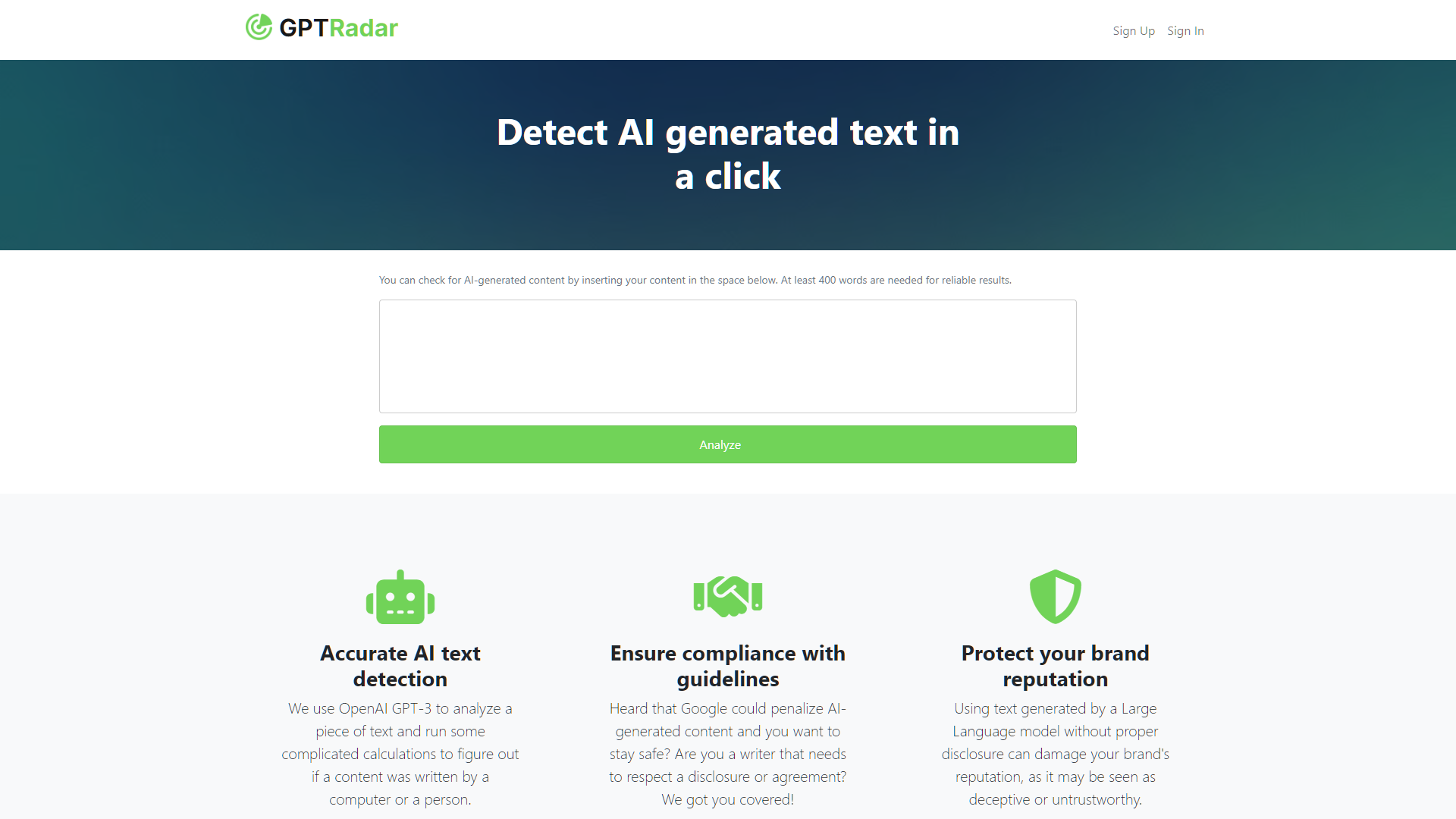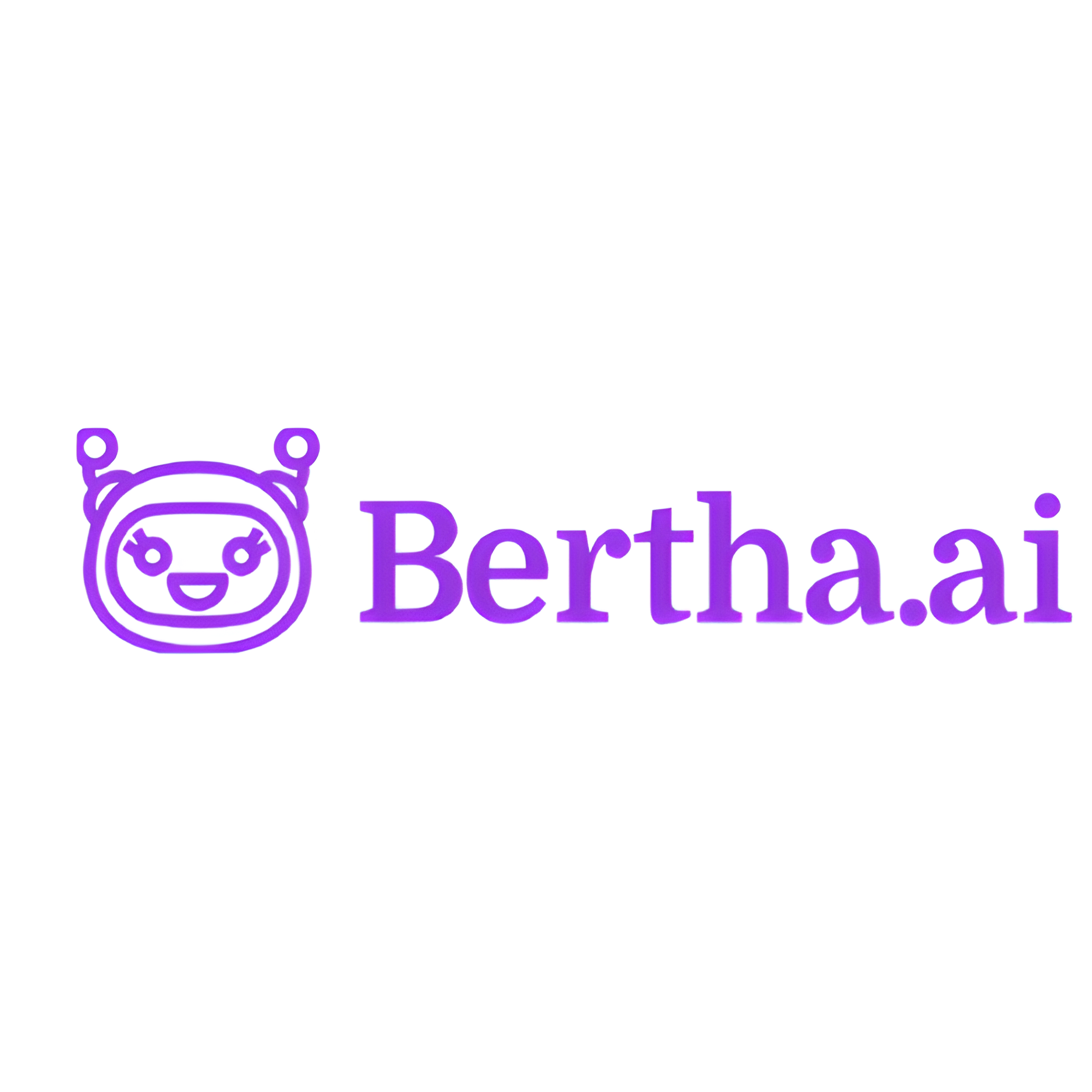Overview
GPT Radar is an innovative AI detection tool designed to identify whether text content has been generated by AI technologies, such as OpenAI's GPT-3, or crafted by human authors. This tool is particularly valuable in today’s digital landscape where distinguishing between human and AI-generated text is crucial for maintaining authenticity and adhering to the increasing regulatory standards set by major platforms like Google. By ensuring content compliance, GPT Radar helps protect the integrity and reputation of brands online.
Operating as a Neuraltext experiment, GPT Radar offers a straightforward pricing model where users pay $0.02 per credit, with each credit allowing the analysis of up to 100 tokens, roughly equivalent to 125 words. This cost-effective solution enables users, ranging from content creators to marketing professionals, to easily integrate this service into their workflow to verify the origin of their text content.
The tool's interface is user-friendly, providing quick and accurate assessments to help users make informed decisions about the content they publish or review. With copyright set for 2024, GPT Radar is committed to staying at the forefront of technology to offer reliable and efficient services. Detailed terms of use and further information about the tool can be accessed directly on the GPT Radar website.
Key features
- AI text detection: GPT Radar uses advanced AI, specifically OpenAI's GPT-3, to analyze and determine whether text content is generated by AI or humans.
- Compliance assurance: The tool helps users ensure their content adheres to various platform guidelines, preventing potential penalties and protecting brand integrity.
- Cost-effective pricing: At $0.02 per credit, with each credit allowing analysis of approximately 125 words, GPT Radar provides an affordable solution for text verification.
- Neuraltext experiment: As a project under Neuraltext, GPT Radar benefits from cutting-edge research and development in AI and machine learning technologies.
- Accessible terms of use: Detailed terms of service are readily available on the GPT Radar website, ensuring transparency and user understanding of the tool's usage policies.
- Copyright protection: With a copyright year of 2024, GPT Radar ensures that all interactions and tool functionalities are up-to-date and legally compliant.
 Pros
Pros
- Seamless integration: GPT Radar easily integrates with various content management systems, enhancing workflow efficiency without disrupting existing processes.
- User-friendly interface: The platform features a simple, intuitive interface that allows users of all technical levels to operate it effectively with minimal training.
- Real-time analysis: GPT Radar provides immediate feedback on text analysis, enabling quick decision-making and continuous content optimization.
- Scalable solutions: Whether for individual use or large-scale enterprise needs, GPT Radar scales effortlessly to handle varying volumes of text analysis.
- Enhanced security measures: GPT Radar employs robust security protocols to protect user data and ensure privacy during the text analysis process.
 Cons
Cons
- Limited language support: GPT Radar primarily focuses on English text, potentially limiting its usability for non-English content verification needs.
- AI detection limitations: While advanced, GPT-3 may not catch all nuances of AI-generated text, possibly allowing some sophisticated outputs to pass undetected.
- Dependence on updates: Continuous updates are necessary to keep up with evolving AI text-generation technologies, which might affect consistency in detection capabilities.
- No offline capability: GPT Radar requires an internet connection to function, restricting its use in environments without reliable online access.
- Platform dependency: Being a part of Neuraltext, any disruptions or changes in Neuraltext's operations could directly impact GPT Radar's services and availability.

















